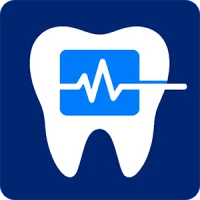
Dental Blog
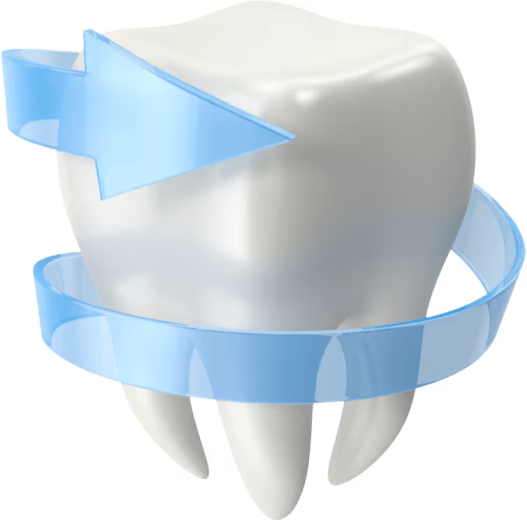

Resources for Dentists
Dive deep into helpful guides and in-depth information about:

Your Resource for Dentistry Insights
Sedation dentistry is evolving. Regulations change, compliance requirements grow, and practices need tools to stay ahead. The Sedate Dentistry Blog is here to help you learn, adapt, and succeed with resources built for dentists, oral surgeons, and office managers.

Explore Topics That Matter

Sedation Dentistry
Learn about sedation dentistry's best practices, compliance tips, and case studies.
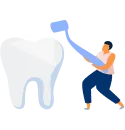
Patient Vitals Monitoring
Device integrations, patient monitoring, and technology insights.

Patient Forms & Experience
Intake forms, digital consent, and patient-focused workflows and user experience.

Dental Practice Growth
Grow your dental practice with in depth guides, tutorials, and software reviews.
Recent Guides for Dentists

Pediatric Sedation Charting: Best Practices for Accuracy
Pediatric sedation charting must be fast, complete, and crystal clear under movement and noise. This guide shows exactly what to capture for kids—mg/kg dosing, vitals cadence, nitrous details, events and responses—and how to design templates, roles, and checklists so the record defends itself without after-hours edits.
Table of Contents
Pediatric Sedation Charting: Best Practices for Accuracy
Pediatric sedation charting starts with weight and ceilings
Required dose fields remove ambiguity under pressure
Baseline and interval vitals must account for wiggly rooms
The nitrous block is dose-over-time, not a checkbox
Event entries make your timeline readable in 10 seconds
Local anesthesia needs a single, structured block
Role clarity keeps entries timely when behavior shifts
Parent-facing documentation reduces after-visit calls
Common pediatric charting errors and how to prevent them
A copy-paste pediatric charting checklist your staff will actually use
A representative pediatric timeline that reads like the room felt
KPIs that prove behavior changed
Pediatric cases change quickly. Small bodies compensate until they don’t, behaviors vary minute to minute, and doses must reflect weight-based ceilings. Accurate charting comes from a repeatable script, a single-screen record, and fields that mirror what your team says out loud. This article translates “do it right” into room-ready practices anchored by Sedation visit record software, Oral sedation record software, Dental sedation compliance, and Patient Vitals Monitor Integrations.
Pediatric sedation charting starts with weight and ceilings
Every pediatric chart should open with age, weight (kg), calculated mg/kg ceilings for each planned medication, and the location of reversals. Display these ceilings right next to running totals so the Recorder never has to leave the timeline. digital sedation visit records supports running totals and hard stops when a ceiling would be exceeded.
Required dose fields remove ambiguity under pressure
Dose clarity comes from eight consistent fields your team can recite as a sentence. “Medication name and concentration (mg/mL), route, exact dose (mg or mL), time, indication, immediate response, running total and mg/kg.”
● Name + concentration makes your math defensible later.
● Route (IV, PO, IN) matters for onset and risk.
● Exact dose with units prevents “about 0.5” guesses.
● Indication ties the dose to behavior or stimulation.
● Immediate response proves you watched for effect.
● Running total and mg/kg show safety at a glance.
Baseline and interval vitals must account for wiggly rooms
Kids move; your cadence can’t. Capture two baselines before medication (SpO₂, HR, NIBP), then follow an interval rhythm you can coach and audit. Patient Vitals Monitor Integrations removes transcription so the Recorder focuses on doses and events.
The nitrous block is dose-over-time, not a checkbox
Gas is medication over time, especially in kids. Capture all four items in one compact block inside paperless sedation visit logs.
● Start time
● Titration range (e.g., 20–35% N₂O)
● Peak percentage and duration at peak
● 100% O₂ flush at the end
That single line eliminates a chronic audit ding.
Event entries make your timeline readable in 10 seconds
Use one format to turn chaos into clarity: Observation → action → (dose if any) → response—each with a time. “10:41 snoring with ETCO₂ 56; chin lift + slight head turn; SpO₂ holds 99%; settles by 10:42; purposeful.” When capnography is available, it’s your earliest airway warning; streaming ETCO₂ into the same timeline lets reviewers confirm safety in one glance.
Local anesthesia needs a single, structured block
Sedation lowers anxiety; local blocks pain. Chart agent (e.g., lidocaine 2%), epinephrine ratio (1:100,000), exact total volume (mL), injection type/site, and times in one place. This clarifies supplements later in the visit and explains why comfort testing succeeded.
Role clarity keeps entries timely when behavior shifts
Monitoring fails when “everyone” owns it. Assign roles and script them.
● Sedation Lead: decides sequence, approves phase transitions, narrates doses.
● Monitor Tech: owns the timer, calls vitals, watches chest rise/waveforms, requests extra entries.
● Recorder: types live, reads back doses with mg/kg totals, logs extra entries during stimulation.
● Room Support: maintains mask seal, positions head, manages suction/O₂, protects sensor placement.
Parent-facing documentation reduces after-visit calls
Close the chart with objective discharge plus brief, kid-specific instructions. State expected drowsiness, eating/drinking guidance, and lip/cheek-biting prevention. Pediatric Sedation Dentistry Near Me: What to Know Before Choosing is a natural cross-link for families comparing providers; Sedation Dentistry for Kids: Is It Safe? offers safety context.
Common pediatric charting errors and how to prevent them
Errors are predictable; design your template to make them hard to commit.
● Missing concentration on doses → require the field and add the word “mg/mL” right in the label.
● Totals without mg/kg → show kg-based ceilings and running mg/kg next to totals.
● Nitrous recorded as “used” → force all four nitrous items in a single block.
● Long gaps in vitals → give the timer to a named person and place it in their line of sight.
● Backfilled notes → live-chart on one screen; no flipping between tabs.
● Discharge by “vibe” → require objective criteria with a hard stop before signature.
A copy-paste pediatric charting checklist your staff will actually use
Use this HTML table for huddles and training.
A representative pediatric timeline that reads like the room felt
● 09:02 Baseline ×2; weight 20.4 kg; midazolam ceiling calculated; reversals present/in date; escort confirmed.
● 09:10 Intranasal dose given; calm environment; show on tablet; lights dimmed.
● 09:25 SpO₂ 99%, HR 92, NIBP 104/66; drowsy but purposeful to voice.
● 09:30 Local anesthesia block documented (agent, epi ratio, mL, site).
● 09:38 Extra entry: gagging with ETCO₂ 53; chin lift and suction; settles by 09:39; SpO₂ 99%; purposeful.
● 09:45 Interval entry; stable signals; restoration begins.
● 10:05 Nitrous block: start 09:50; 20–30% range; peak 30% ×10 min; O₂ flush at end.
● 10:20 Recovery; vitals stable; sips tolerated.
● 10:35 Discharge criteria met; escort briefed; written kid-specific instructions provided.
KPIs that prove behavior changed
Tiny dashboards beat opinions because they’re fast to review and hard to argue with.
Turning best practice into habit in four weeks
● Week 1: Publish pediatric template with dose ceilings, nitrous block, and event pattern inside sedation record software (digital).
● Week 2: Stream SpO₂/HR (add NIBP and ETCO₂ where available) via Patient Vitals Monitor Integrations.
● Week 3: Drill the eight-field dose sentence with mg/kg, timer cadence, and extra-entry practice.
● Week 4: Go live; coach to KPIs; fix dips with 2-minute micro-drills at huddle.
Bottom line
Pediatric sedation charting is accurate when fields mirror spoken scripts, mg/kg ceilings sit beside running totals, vitals cadence is timer-driven, nitrous is captured as dose-over-time, and events follow a single line format. With those elements living inside the chart—and objective discharge enforced—your rooms feel calmer and your notes defend themselves.
Next Steps
Book a Free Demo to see how Sedate Dentistry’s Digital Sedation Visit Records Software can streamline and replace paper sedation visit records—saving time, money, and increasing compliance while reducing liability and improving the quality of patient records.
Ready to modernize your sedation documentation? Book a Free Demo.

Stay Ahead of the Curve
Benefits of Following Our Blog
Learn compliance best practices.
Discover new sedation software features.
Get expert tips for improving patient care.
See how practices are switching from paper or competitors like Xchart.

Learn More About Sedate Dentistry?
Request a software demo today. See how we can digitalize your sedation visit records.
Simple Pricing, No Hidden Fees
No limits on Procedures or Patients (additional fees for additional offices and dentists)
Testimonials
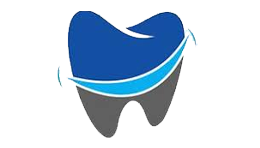
SmileRight Dentistry
Here's Sedate Dentistry Software in a nutshell. Time Saver. Money Saver. Easy to use. Amazing support. End of story.
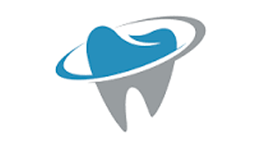
DentalClean
We learned about Sedate Dentistry from one of their other sister companies Edental. We switched from Xchart and this app works great.
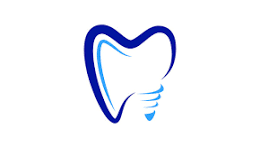
Metro Dentistry
The team at Sedate Dentistry has been amazing, especially Josh who helped integrate into our Edan X10. Much better than Xchart and a fraction of the price.
Contact Us
Contact Us
3165 West 4700 South, Suite A, Taylorsville Utah 84129



















